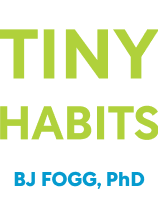

This article is an excerpt from the Shortform book guide to "Tiny Habits" by BJ Fogg. Shortform has the world's best summaries and analyses of books you should be reading.
Like this article? Sign up for a free trial here .
Do you want to know how to get rid of bad habits? What have you been missing out on because you’ve been entangled in your bad habits?
The Tiny Habits Method was created by behaviorist BJ Fogg and it helps you learn the best methods for developing positive habits. However, many of Fogg’s followers realized that the Tiny Habits Method could also be used to rid themselves of bad habits as well.
Keep reading to learn how to use the Tiny Habits Method to rid yourself of bad habits.
How to Get Rid of Bad Habits
When people begin to cultivate their habit gardens, they usually find a combination of empty, fertile parts, full of space for new habits, and parts that are full of weeds: bad habits that need to be uprooted before you can plant anything new in that spot. Let’s learn how to get rid of bad habits.
Initially, the Tiny Habits framework didn’t include advice for eliminating bad habits. This was because author BJ Fogg didn’t want to cross over the boundary into giving advice about serious addictions. Tiny Habits isn’t designed for that. But after some of his Habiteers started designing bad habits out of their lives using Behavior Design principles, he realized that other people could benefit from this too.
Before we move on, let’s look at some of the benefits of shedding bad habits.
The Benefits of Shedding Bad Habits
When you drop an old habit, it creates space for new things to flourish. This might be a hobby, improved work performance, a relationship, or an identity, or it might simply make you more responsive to the world around you.
For example, Habiteer Juni worked hard over several months to free herself of her sugar dependence. One afternoon, at a time when a few months before she would have been sleeping off a sugar crash on the couch, she heard someone singing outside. She went to see what it was and found her autistic son Elijah, who was quietly singing a song of his own creation about dolphins. She sat down next to Ellijah and talked to him, encouraging him to sing more. Juni realized that if she hadn’t kicked her sugar habit, she would have missed hearing him sing—and he would have missed her words of encouragement.
Uphill, Downhill, and Freefall Habits
There are three types of habits based on ease of maintenance:
- Uphill Habits require effort to maintain. Without effort, they’ll probably stop. Getting up early, avoiding social media, and going for a run every morning are uphill habits for most people.
- Downhill Habits require no effort to maintain and effort to stop. Sleeping in, scrolling through social media, and going back for seconds are usually downhill habits.
- Freefall Habits are addictions and other serious problems that require professional intervention. Tiny Habits is not designed to deal with Freefall Habits.
We usually use the word “break” when talking about stopping a bad habit, but this metaphor doesn’t work in the Tiny Habits context. A better metaphor is a complicated snarl of knots in a string. We’re unraveling this tangle one knot at a time. When approaching a tangle like this, you don’t unravel it all at once. You don’t go for the hardest bit first. You work on the easiest, most accessible part first.
Think about it as a design issue. If you can engineer a habit you want into your life, you can reverse engineer a habit you don’t want out of your life.
“Bad” habits and “good” habits have the same structure—the only difference is the value that you (or society) have attached to the habit. To unravel these habits, you simply apply the Behavior Design principles in reverse. You take behaviors that are currently above the Action Line and try to figure out how to push them below it. You can approach this by:
- Decreasing your Motivation to do the bad habit
- Decreasing your Ability to do the bad habit
- Eliminating or otherwise disrupting the Prompt.
Again, motivation is the trickiest of these. It’s best to tackle this last.
It’s important to work skillfully with emotions when getting rid of bad habits. In both cases, we take judgments such as “character” and “weakness” out of the equation. When unraveling old habits, we bypass the feelings of shame and powerlessness that often accompany habits we’d like to stop.
Three Stages for Addressing Bad Habits
Fogg recommends a three-stage plan for stopping bad habits.
Stage 1: Start by adding a new habit.
Stage 2: Learn how to stop the old habit.
Stage 3: Substitute the old habit for the new one.
Stage 1. Lay the Groundwork
Add some new habits that are unrelated to the problem domain. This helps you get in some wins and gain confidence in an area that’s relatively free of layers of self-critical sediment.
Let’s say your ultimate target is reducing casual alcohol consumption. If you’re generally on top of household cleaning and confident in your cleaning skills, introduce a new habit related to cleaning. This is the most direct route to accessing the feeling of success.
Making an easy change like this helps to trigger an identity change: Now you’re someone who is successful and competent at making life changes. Sometimes new habits are enough by themselves to shake up your routine and dislodge (or at least displace) old problematic ones.
Stage 2. Design and Experiment
As with new habits, don’t try to work toward abstractions (“Be less stressed,” “Drink less alcohol.”) These are too general to tackle with Tiny Habits. Instead, use the abstraction as inspiration for an inverse Swarm of Bs.
Perhaps the general version of your unwanted habit is “eating too much sodium.” Write this in the middle of a piece of paper and put a circle around it. Then create your Swarm of Bs. What exact behaviors make up this unwanted habit? (For example, eating french fries with lunch,” “snacking on pretzels after work,” “adding salt to dinner at the table.”)
You’ll probably list more things than you expect. It’s normal to feel a bit embarrassed or ashamed when you see your constellation of bad habits exposed, but these feelings should quickly turn around when you think about tackling some of the easier behaviors.
Pick one of the more accessible behaviors to begin with. Which behavior feels like it would be easiest to do without? That’s your first target.
Target P, A, and M as Needed
1. Target the prompt.
- Eliminate it. Turn off notifications on a social media app while you’re at work. (More drastically, delete the app completely.)
- Avoid it. Keep yourself away from the prompt. Don’t keep ice cream in the freezer. Don’t go into the bakery that sells the delicious chocolate croissants. Don’t spend time with people who have the same habit. Consider developing a routine to pre-empt the prompt. For example, Fogg has developed the Tiny Habit of saying, “No bread, please” to restaurant servers who approach his table with a bread basket. This Tiny Habit gets rid of a dangerous prompt (having bread on the table), and it’s much easier than resisting the bread once it’s already on the table.
- Ignore it. In the presence of the prompt, put your attention somewhere else. This is the least preferred option because it exhausts willpower each time. It works okay when you’re feeling good, but can be a problem when you’re under stress.
2. Target Ability. Make the action harder. You can target any link in the Ability Chain.
- Design the activity so it takes more time. In the Fogg household, there’s no rule against eating ice cream, but there’s never any ice cream in the freezer. If you want ice cream, you have to go out and buy it yourself. That’s usually enough to discourage casual ice cream eating.
- Design the activity so it makes you spend more money. This is difficult if you’re working with your own habit. This is the tactic used in “swear jars” that you have to put money into whenever you swear, and systems where your kids pay a few dollars per hour to play video games. Taxes on cigarettes and sugary drinks are an example of the application of this principle on a national level.
- Design the activity so it demands more physical effort. This is Fogg’s favorite chain link to attack. For example, he stores his TV away when he’s not watching it. To watch TV in his house, he has to get it out of storage, carry it to the living room, and plug it in. This means that he only watches TV when there’s a very good reason. But this isn’t as extreme as the “Bike-TV.” As a postgrad, Fogg was living with his sister. To reduce the amount of TV they watched, he bought an exercise bike and paid an engineering student to rig the TV so the bike pedals were connected to the TV’s power switch. If they wanted to watch TV, one of them had to be on the bike turning the pedals. Effect: they both watched less TV and got much fitter.
- Design the activity so it demands more mental effort. This is a very effective plan of attack, because a defining quality of habits is that they’re automatized. Adding extra mental effort gets in the way of this automatization. That’s one of the reasons why Weight Watchers is so successful. Having to count points or calories adds an extra step of mental effort—often enough to disrupt automatic eating habits. Try this method on social media: reset your passwords to something ridiculously convoluted—the one Fogg suggests is ‘1Lik3be1ng0uT51de’ (“I like being outside”)—and don’t save it on your devices. The effort required to spell out a monster password like this may very well deter you.
- Engineer clashes with existing valued routines. This approach is quite tricky. For example, in timeslots where you would typically engage in your bad habit, try to start spending time with your pets or your kids.
3. Target Motivation. As with starting new habits, people usually target motivation first when trying to stop unwanted ones. This isn’t the ideal approach, because it’s usually hard to change the motivation levels for Downhill Habits.
- Approach 1. Target motivation indirectly through an added behavior. For example, eat lunch early if you know there’ll be pizza in the meeting room, or go to bed early if you want to get up early and go for a run the following day. One former student of Fogg’s argues that if we set our phone screens to grayscale, we’ll check them less because there’s no cocktail of bright colors to hijack our attention.
- Approach 2. Add something demotivating. This could be declaring on social media that you’re done with alcohol, or pledging to make a big donation to a politician you hate if you smoke again, or visualizing how terrible your life will be if you don’t stop eating junk food. Fogg doesn’t recommend this option, as it often backfires or is ineffective. Demotivators don’t get to the bottom of the unwanted behavior. They just add a conflicting motivation that may or may not be strong enough to override the original one.
Stage 3. Substitute
Fogg offers the following advice for substituting a new habit for an old one.
- Choose wisely. It’s important that the substitute habit is more motivating and easier than the old one. For example, decide that you’ll watch cat videos on YouTube instead of reading political news.
- Refashion the prompt. Find the prompt that triggers your unwanted behavior and begin to associate it with a new behavior. For example, if you usually check your phone immediately after waking up, take three deep breaths instead. Remember to celebrate to lock in this new response.
- Manipulate Ability and Motivation for both habits. Make the old habit harder and less motivating; make the new habit easier and more motivating.
- Experiment. If it doesn’t work the first time, choose another new behavior and try again. Remember that if you’re shopping for shoes, you usually don’t buy the first pair you try on. Treat finding the substitute behavior like shopping for shoes. If one pair doesn’t fit, keep looking.
- Try a substitute behavior for a limited period (three days; a week) and evaluate after that.
- Get to know your own weak points and take advantage of them. For Fogg, making a behavior physically difficult is the best way to get rid of it.
- If nothing changes, leave the bad habit alone for a while. Go back and sharpen your behavior change skills on other changes. Come back to the habit later.
Bad habits that involve a lack of behaviors (arriving late or procrastination, for example) can be trickier. To fix these, focus on introducing new behaviors (setting a timer when getting ready to go out; finding a reliable prompt to start working on a project).
Example: Juni and the Underlying Causes of her Sugar Habit
Juni came across Tiny Habits as an early morning radio show host who used sugar to keep herself upright. After her mother died from diabetes, this only became worse—she started to use sugar as a way to avoid her grief, a pattern that was still in place two years after her mother’s death.
Juni knew that her sugar habit was becoming a serious health problem and started trying to find ways to tackle it. She resolved to run a marathon and created a system of healthy eating habits around this. She also realized that incipient feelings of grief acted as a prompt for her to reach for that bucket of ice cream, so she started rewiring her response to these feelings, turning them into a prompt to open her journal or call a friend. As she processed her grief in a healthy way rather than suppressing it with sugar, her sugar cravings decreased, and eating sugar began to feel more like a choice than a compulsion.

———End of Preview———
Like what you just read? Read the rest of the world's best book summary and analysis of BJ Fogg's "Tiny Habits" at Shortform .
Here's what you'll find in our full Tiny Habits summary :
- How you can successfully create new habits that stick
- Why you don't need motivation, just science
- Why even flossing one tooth should be considered a victory






